Category — Recipes
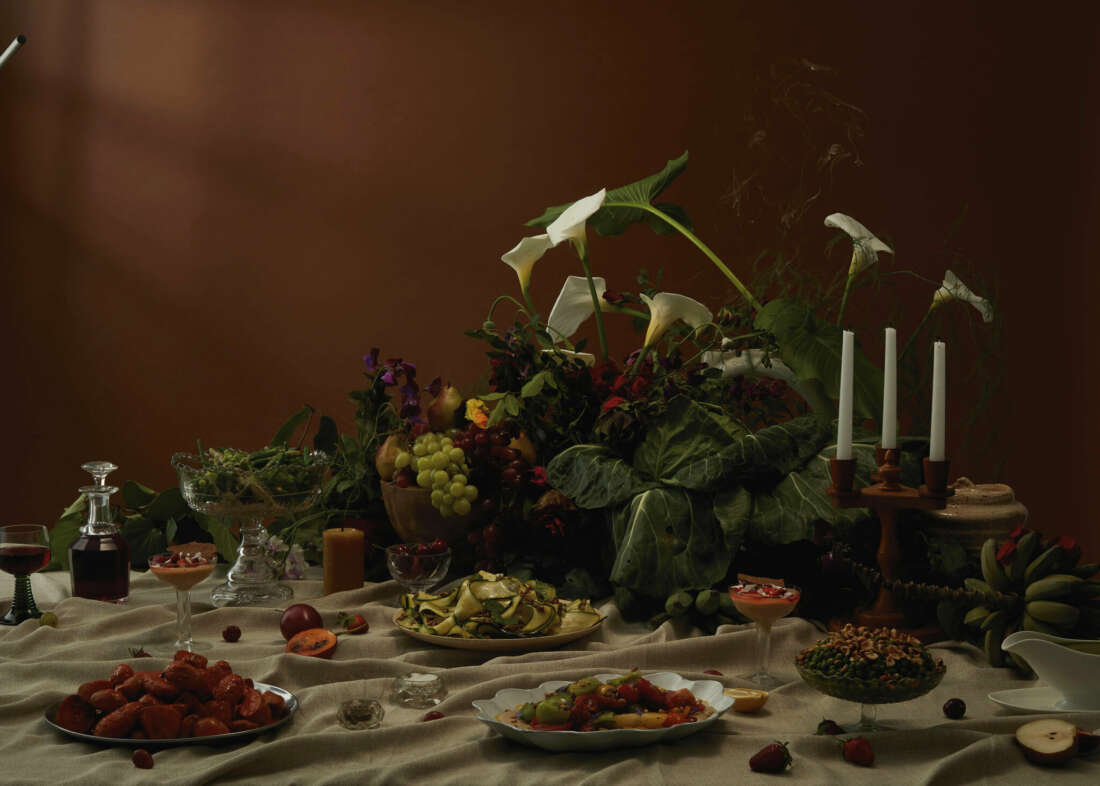
Forest Gatherings
Gatherings Christchurch owner and chef Alex Davies describes himself as a veggie forward chef who serves sides of fish for those who feel they need it, and Plabita Florence has just opened a plant based eatery in Auckland called Forest. If you wanted advice on some vegan friendly alternatives to animals and dairy for the Christmas dinner table this year— because of your own dietary beliefs, to be inclusive of plant based family or friends, or just to have some delicious vegetable additions to your feast— these talented plant lovers have got you covered.
Plabita of Forest in Auckland.
Tomatoes with pine nut puree and lavender
In my opinion, one of the best things about this time of year is sun ripened tomatoes. I don’t see a need to try to be clever as they’re already so full of flavour, so this dish is subtle and fragrant, allowing the tomatoes to shine.
1 cup apple cider vinegar
small bunch of fresh lavender flowers with stems
2 cups toasted pine nuts
7 cloves garlic, roasted until gooey)
1 cup warm water – add a little more if needed
extra virgin olive oil
5-6 large tomatoes
salt & pepper
Vinegar: Heat the vinegar until it almost simmers. Bruise the lavender flowers and stems a little, place them in a jar or bottle. Pour over the hot vinegar, put the lid on and forget about it until you use it – this is best done a couple weeks ahead of time.
Pine nut puree: Put the toasted pine nuts in a blender with the garlic cloves, water, a big drizzle of olive oil and season to taste. This will firm up a bit as it sits.
Tomatoes: Cut about 5 or 6 nice big tomatoes, however makes you happy, season them generously with salt and pepper, drizzle with some of your lavender vinegar and mix. Let them spend some time getting to know each other, the flavour will only get better! If you’ve got some other herbs in the garden (dill, marjoram, thyme, literally whatever) you should probably put some of them in now too, it couldn’t hurt.
To serve:
Put a big pile of the pine nut puree in the middle of your serving dish and make a hollow in it, toss your tomatoes one last time to wake them up, tip it all in. At this point you can go nuts and garnish with whole pine nuts, sea salt, cracked pepper, fresh lavender and olive oil.
Green beans with pickle juice panade and spring onions
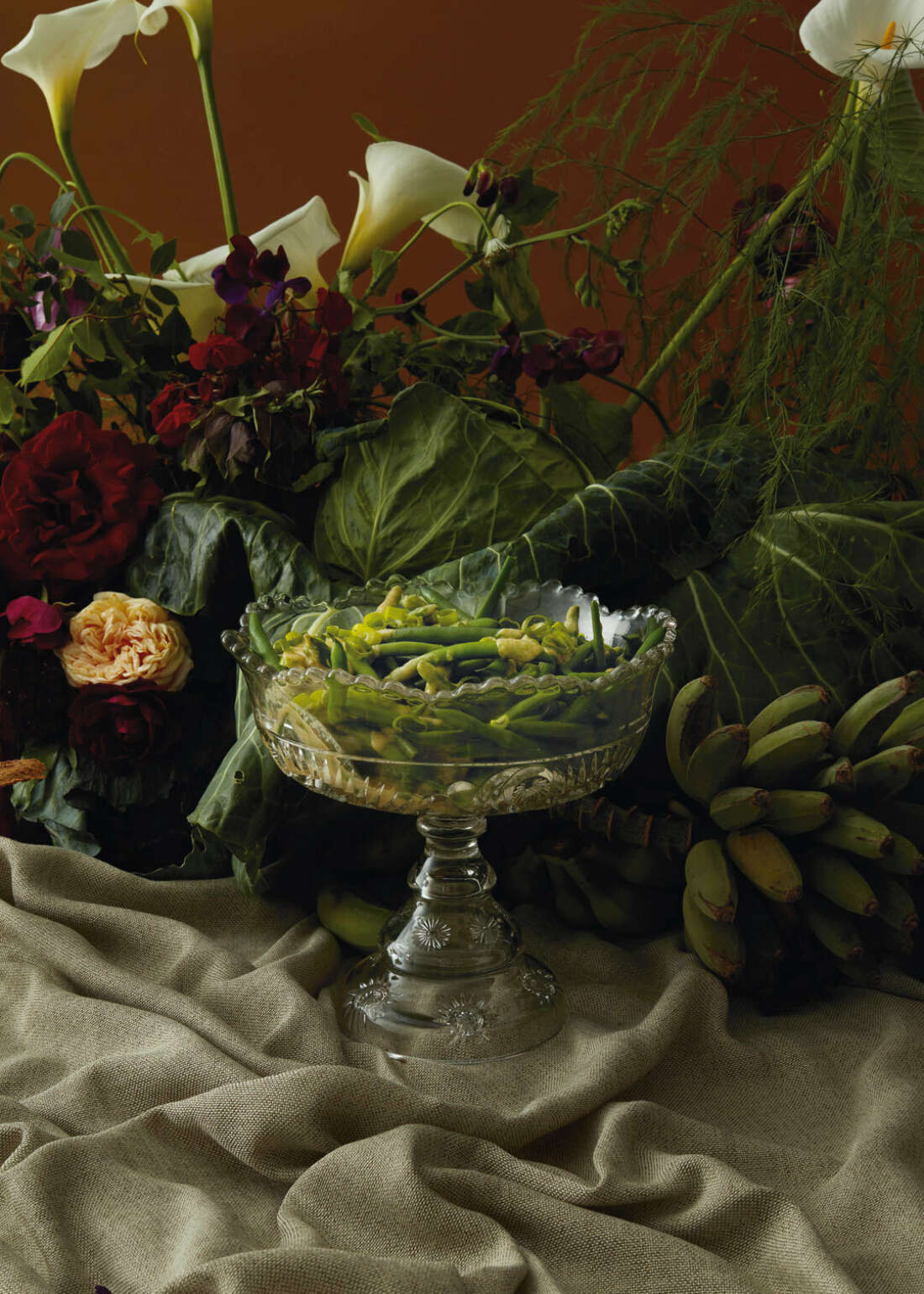
Panade is a sauce I make at the restaurant as a delicious way to use stale bread. In France it is traditionally made with stock or milk, but I prefer to use pickle juice instead, it uses another ‘waste’ product and adds another flavourful dimension. This can be the leftover liquid from a jar of gherkins, or even better from pickled chillies— the balance of tangy and spicy is goooood.
extra virgin olive oil
1 onion, roughly chopped
2 cloves garlic, smashed
4 or 5 slices of dry bread
pickle juice
water
2 bay leaves
350g green beans
2 spring onions, finely sliced
Heat oil in a hot pot, add onion and garlic. You want to hear an aggressive sizzle when they hit the pot. Let it sit without stirring too much until you get a nice golden crust on the bottom. This dish doesn’t have many ingredients, so you want to intensify the flavour of everything you use. Tear up the bread and add it to the pot. You’re going to blend this later so don’t worry about how it looks at this stage. Once it’s nice and caramelised, pour in a 50/50 mix of water and pickle juice, just enough to cover everything. Add bay leaves, a little glug of olive oil and salt and pepper to taste. Let it come almost to the boil then remove immediately from the heat and allow to sit for 20 minutes or more. The bread will quickly absorb most of the liquid. Once it’s cool, remove the bay leaves and blend until silky smooth.
Blanch 200g green beans briefly in salty water, refresh in cold water, then toss them with the spring onions in a bit of olive oil, salt, pepper.
Scatter on a platter and serve with a generous dollop of panade.
*panade can also be used to fill ravioli, spread on a sandwich, or as a cold dip for radishes from the garden or chips.
Strawberries and caramel oat cream with geranium syrup
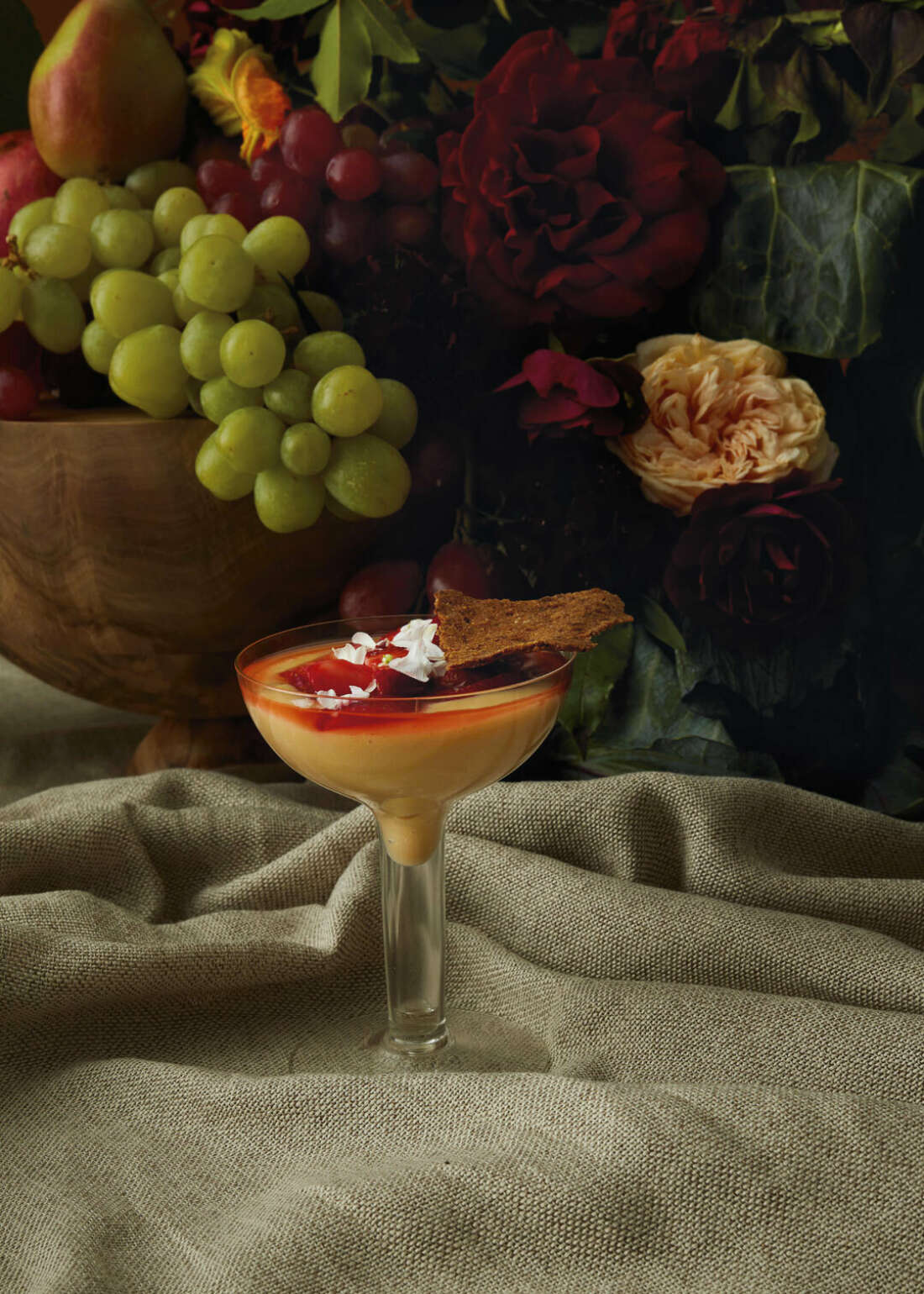
Oat cream is awesome if you’re avoiding traditional cream, but want to have that creamy silky texture. It not only replaces cream but also comes with its own nutty, cereal flavour. You can make crackers with your leftovers.
6 geranium leaves
200g sugar
100ml water
2 punnets strawberries
½ lemon
½ cup rolled oats
2 cups water.
Salt
Geranium syrup:
Take the geranium leaves (regular is fine, if you can find a rose-scented or lemon geranium, even better!) and place them in a small pot with 50 grams of the sugar and water. Bring to the boil, stir to dissolve the sugar, then remove from the heat. Strain and cool.
Strawberries:
Slice the strawberries into a bowl, squeeze a little lemon juice over them and ¼ of a cup of your geranium syrup. Mix them gently and let them sit while you prepare the cream.
Oat cream:
Of course you can totally use bought oat milk for this recipe, but I would recommend making it from oats, it’ll be creamier and you’ll save money and a bunch of packaging.
Place oats in a blender with water and a pinch of salt, blend and strain. Set the oat solids aside to turn them into crackers* later.
Place the remaining 150 grams of sugar in a pot and bring to a medium-high heat. Let it melt and bubble, without disturbing it. Watch carefully as the colour changes. Once you see the sugar turn a nice deep golden brown, take the pot off the heat. You need to act quickly here as it will continue cooking as it sits. Pour the oat cream in a tiny bit at a time, whisking as you do. Keep adding gradually until it’s fully incorporated.
To serve:
Pour the oat cream into small individual bowls, spoon the berries in the middle, the syrup should be turning a vibrant red and will ripple through the cream. A few fresh geranium petals here wouldn’t hurt. This is good on its own, or, as with most things, could be improved by being eaten with cake or pudding.
*Crackers are super easy to make. Put the oat solids in a bowl and mix with the same quantity of flour, a generous pinch of salt and two tablespoons of olive oil. Add a touch of water if it’s crumbly, or flour if it’s gluggy. It should resemble a rough pastry, smoothish and holding together easily. Press or roll out thin onto a well oiled sheet, and bake at 160 for 20 mins or until lightly browned and crispy. Break into pieces. If you wanted to add seeds, spices, herbs, pepper, you totally can.
Alex Davies of Gatherings and Alfred in Christchurch
For Christmas I like to create big sharing plates for everyone to get stuck into. These dishes stand alone, but if you are lucky enough to live near a foraging or fishing ground, go for it. Everyone has a die hard meat and or fish lover in the family, so don’t exclude them, it will only push them away and these will work with their meal too. Get them involved and who knows, maybe next year they’ll only go for the vegetables.
PEAS, HAZELNUTS AND GREEN SAUCE.
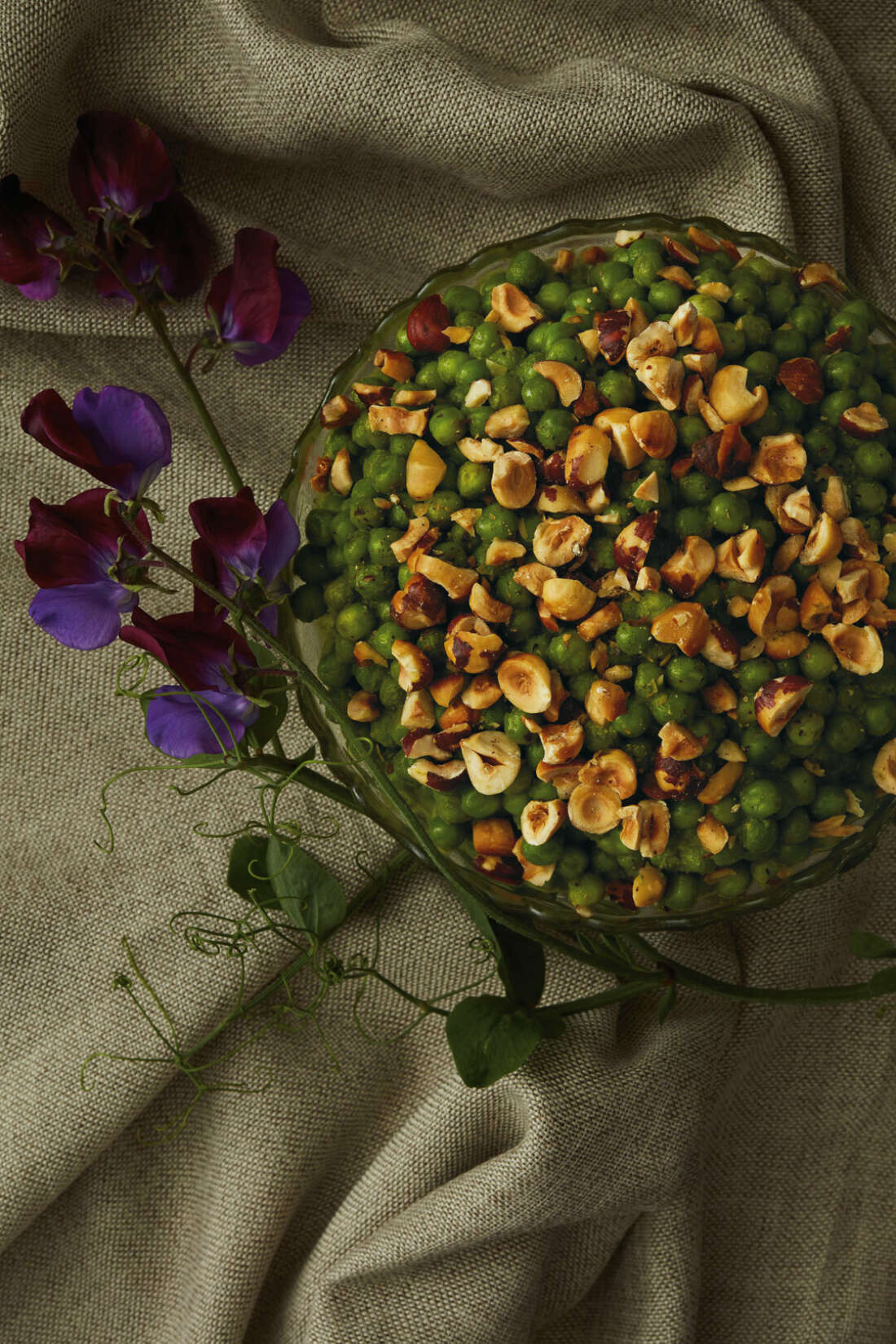
2kg peas in the pod
1 head of garlic
700g hazelnuts
3 lemons, zest and juice
3 heaped handfuls of mixed herbs or foraged greens, picked as close to using as is possible.
600ml good olive oil
Open the peas. This is a fun family activity in which everyone can be involved, eat them raw as you go, but don’t get too carried away. Set aside and keep the shells.
Place the pea pod shells through a juicer 2 times and extract as much juice as possible. You can use a blender with a little water if you don’t have a juicer.
Add herbs, lemon juice, zest and garlic to a blender, slowly emulsify with olive oil and pod juice to give a bright green zesty sauce. Season to taste.
Blanch peas in boiling water as salty as the sea.
Remove after 1 minute and plunge into iced water to stop cooking. Strain.
Toast hazelnuts in a hot oven at 180°C for about 10 minutes. Remove the skins if that’s your thing, it looks nice but isn’t necessary.
To assemble, toss the peas through the green sauce. Season to taste and finish by scattering roughly chopped hazelnuts all over the top. A few picked herbs can look nice too, but can be time consuming and it is Christmas, and you’d probably rather be knocking back a few sherries with grandma, so make it look as fancy as you wish. If you have time, do it, if sherry is more your thing, do that instead.
ROASTED POTATOES WITH SALTED LEMON JUICE AND CHILLI.
20 chillies (I like it hot!!!!)*
Salt
2kg new potatoes
350ml coconut oil (or chicken fat from a previous meal if chicken is your jam)
Salt to taste
4-6 lemons (depending on juiciness), zested
Start the chilli ferment on the 18th of December. If you can’t be bothered, use Tabasco.
Chop chillies into chunks, cover with water (probably about 250ml) with 3% weight of salt poured over it. Cover and leave on the kitchen bench for 4-5 days until starts to smell a little sour and interesting.
Blend the whole lot and put into the fridge, voilla, fermented chilli paste. You can get more advanced and add blends of different chillies to get the flavour you’re after, smoking them is also delicious.
Cover the potatoes in heaps of hot oil and salt, be generous, potatoes LOVE salt.
Cook in a hot oven at 180°C for about 45 minutes, you want it to give with a sharp knife, but keep its shape, if you are camping or going old school, place the potatoes in a kelp sack, this will also act as seasoning for the spuds and place next to a hot fire, this will take a little longer but the success of cooking in this manner is a joy to behold.
Once cooked, squeeze the juice out of the lemons and emulsify in a blender with the hot oil residue from cooking the spuds (at a ratio of about 1:1), then add zest. Mix lemon emulsion, spuds and as much chilli as you can handle.
Tip into a bowl or platter to serve, that is it. This doesn’t present like a 3 hat restaurant, but the flavour packs a solid punch and the roasties are a nice homage to the classic European christmases past that we hear about on the radio, with a striking punch that speaks of summertime in Aotearoa.
*you will have fermented chilli paste left over for eggs the following morning.
COURGETTES WITH CONFIT GARLIC, PUMPKIN SEEDS AND MINT.
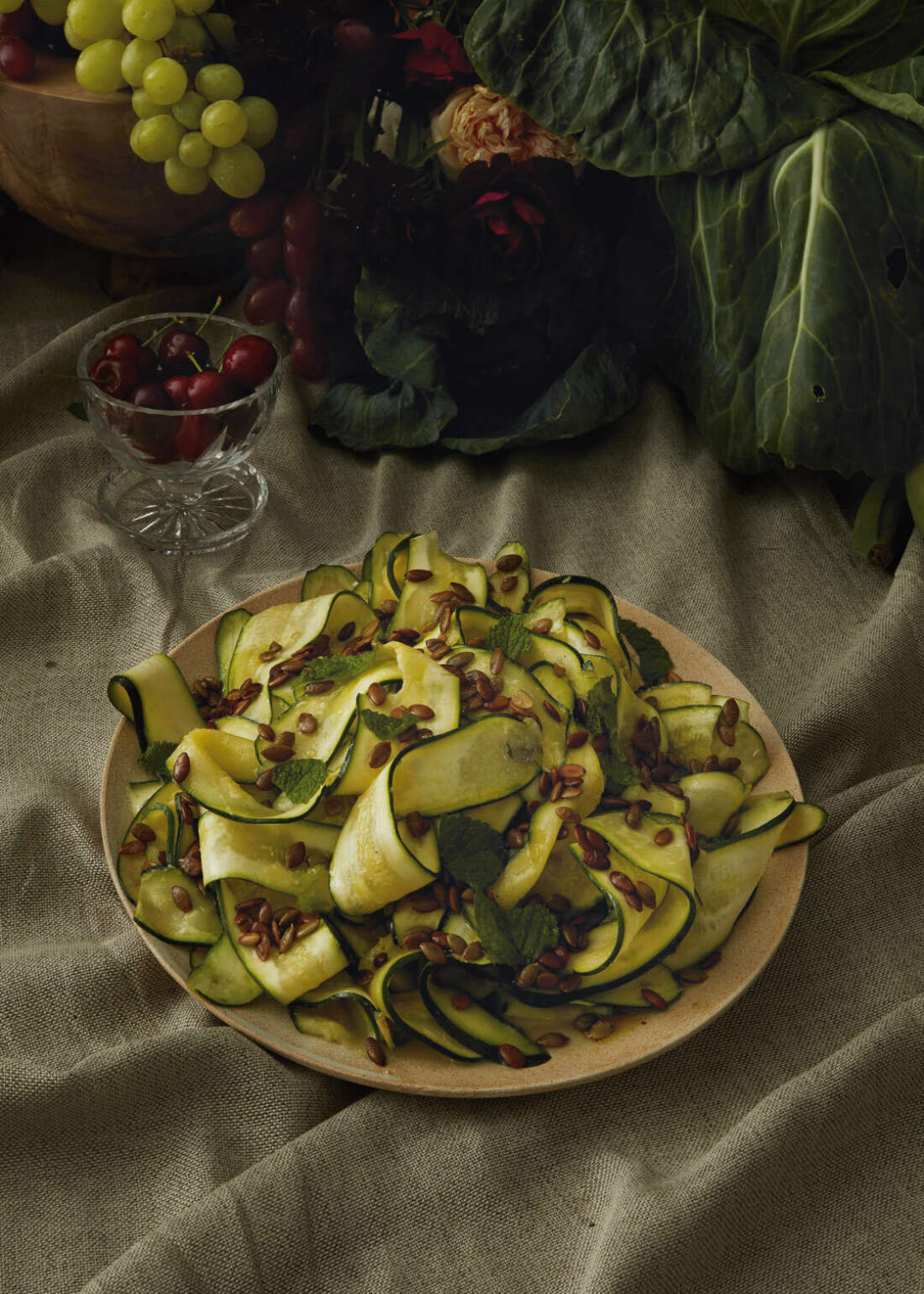
2kg courgettes
20 cloves of garlic
300ml Extra Virgin olive oil
500g pumpkin seeds.
Large handful mint.
Bundle of thyme.
Shave courgettes with a potato peeler so they resemble ribbons.
Blanch in water as salty as the sea and plunge into ice water to stop the cooking process.
Peel garlic cloves and place in a pot, cover with olive oil and cook at a low low heat for about 20 minutes and or until the garlic is really soft, blitz this into a paste.
Roast the pumpkin seeds in lots of oil and salt for 10 minutes at 180°C until they a popping and nice and toasty.
Dress the courgette ribbons in the garlic paste spread across a dish and tear mint over the top, some freshly picked thyme leaves work really nicely as well. Garlicky, fresh and moreish, what is there not to love.
Photography: Fraser Chatham